In this guide, you’ll learn:
Inbound marketing is among the most effective marketing strategies to attract leads and new customers for SaaS businesses. It can be challenging to know where to start.
How do you attract more leads and new customers through inbound marketing for your SaaS company?
What is Inbound Marketing For SaaS?
Inbound marketing for SaaS is a customer-centric marketing strategy that helps you attract, engage, and delight your target customers at each stage of their journey.
So, how can we put the inbound marketing strategy to work in our SaaS business? While we may be all technical and respond with complex solutions, SaaS inbound marketing is very simple. Here’s what you need to know.
The goal of inbound marketing for SaaS businesses is to attract strangers, convert them into leads and turn those leads into lifelong customers.
According to statistics, inbound marketing strategies can generate 54% more leads than outbound marketing.
The problem SaaS-businesses face is to decide which marketing strategy to utilize – outbound or inbound. It’s up to the marketing manager to determine which form of marketing is most appropriate for your company.
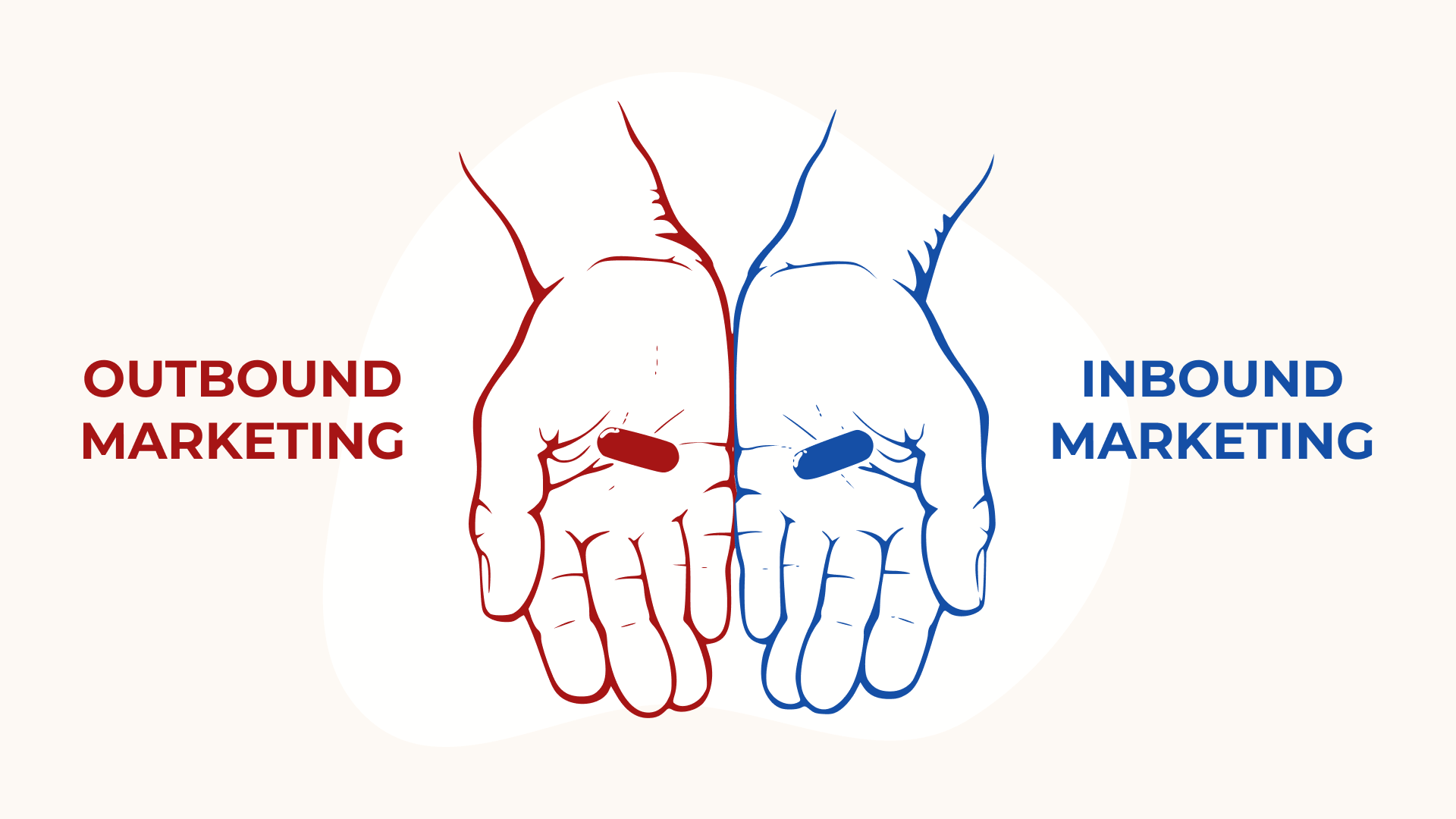
In case your marketing manager chose inbound marketing, we want to share with you 8 effective strategies that you can use to attract more leads and new customers.
1) Define Your Buyer Persona
The first step in any inbound marketing strategy is to define your buyer persona. Your buyer persona is a fictional representation of your ideal customer.
When creating buyer personas, it should include information about their demographics, interests, and needs. This information will help you create relevant content that appeals to your target audience.

The ideal buyer journey includes the following key stages:
- Awareness: the buyer becomes aware of their problem or need
- Consideration: the customer begins researching solutions to their problem
- Decision: the customer decides on a solution to their problem
- Retention: he continues to use the chosen solution
- Advocacy: the buyer promotes the preferred solution to others
It’s essential to keep this in mind when creating your inbound marketing strategy to create content that appeals to your buyer’s journey at each stage.
2) Build An User-Friendly, Intuitive Website
Landing pages are a great way to grab attention and drive conversions. But, creating an effective landing page requires some introspection; you need to be clear on who your target customer is and what specific pain points they have that you can address. What value are you offering, and how does it compare to what else is out there?

Your headlines should be interesting and appeal to your target market, with benefits, case studies, and lead capture forms that will entice prospects further into your inbound marketing funnel.
Some tips for optimizing your website include:
- Use keyword-rich titles and descriptions
- Optimize your website and each web page for mobile devices
- Use engaging visuals and videos
- Include calls-to-action (CTAs) on every page
3) Publish Valuable Content
One of the best ways to attract leads and paying customers is to publish high-quality, educational content that is relevant to them.
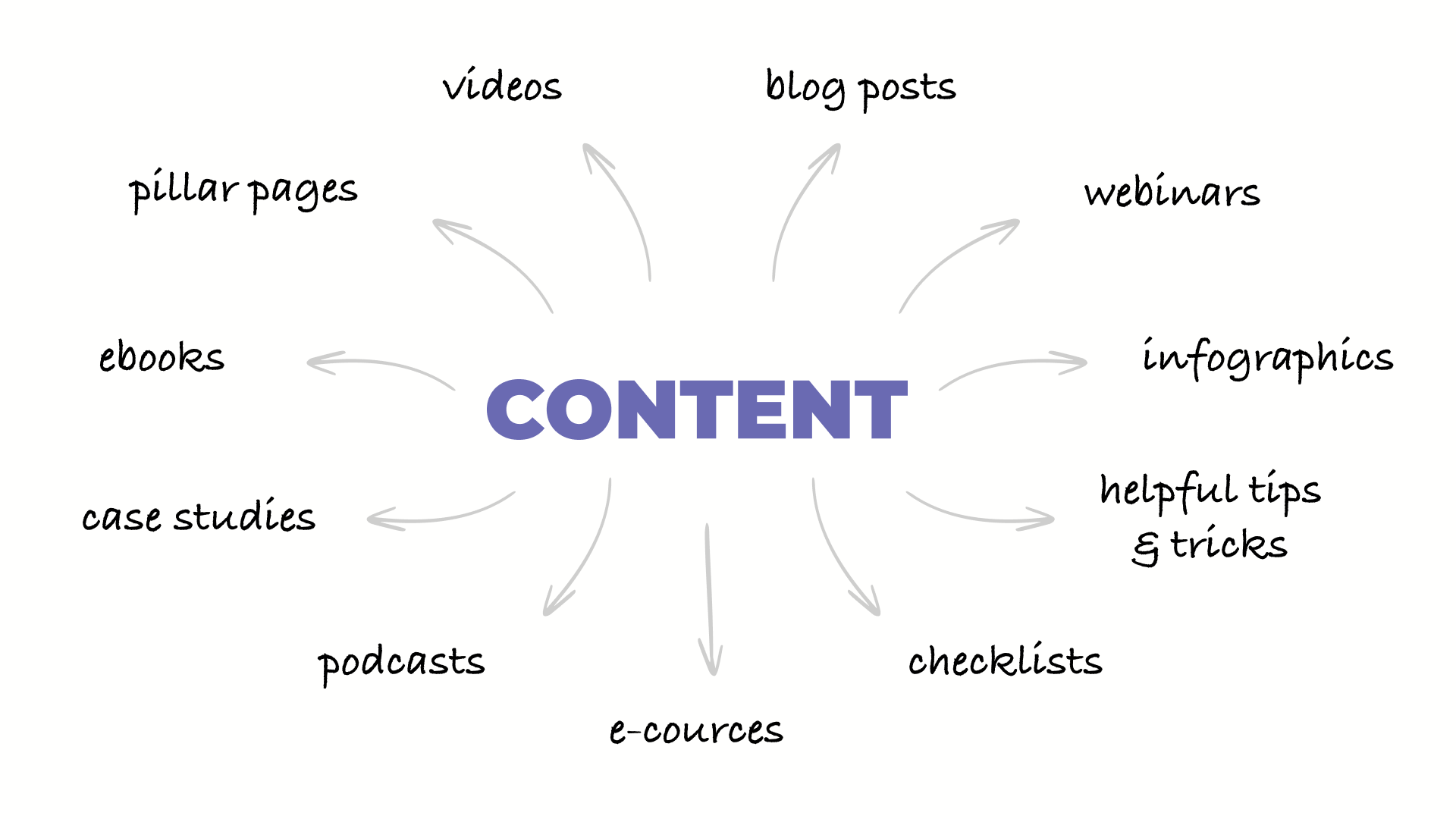
It’s worth noting that content marketing should not be confused with digital marketing. In fact, content marketing is just one aspect of digital marketing. All your other digital marketing efforts, such as search engine optimization (SEO), social media marketing, and email marketing, growth marketing should work together to support your content marketing strategy. Content marketing provides valuable content to users and helps build trust, while digital marketing is a term for any online promotion.
4) Create And Implement A Solid SEO Strategy
Search engine optimization or SEO, is vital to b2b SaaS inbound marketing strategy. To ensure that as many people see your content as possible, you need to have a solid SEO strategy in place.
These techniques will help you improve your content’s SERP rankings and outshine your competitors:
Establish Keyword Research
To produce SEO-friendly content, you need to know what your target market is searching for to rank for relevant keywords. You can use various free and paid tools to find these keywords, such as Google Keyword Planner, KWFinder, SECockpit, and Moz Keyword Explorer.
You should use target keywords with a monthly search volume of at least 1,000 searches.
Use Relevant Keywords Throughout Your Content
Once you know which keywords and phrases to target, use them throughout your content, including in the title, meta description, header tags, body copy, and URL.
But remember:
- stuffing your content with too many keywords will do more harm than good.
- ensure that your keywords flow naturally and don’t sound forced.
- don’t forget to optimize your images as well.
Research Your Competitors
To beat your competitors, you need to know what they’re doing. Research their backlinks and see which keywords they are targeting. You can also use tools like Google AdWords Keyword Planner and Google Trends to see which keywords are being searched for the most.

Create Valuable, Engaging Content
For your content to rank high in SERP, it needs to be valuable and engaging. Create content that addresses the specific pain points of your target market and provides them with truly helpful information. For instance, if your SaaS business is focused on education and learning, you should publish educational content, blog posts, infographics, and eBooks.
Build Links With Your Content To Create An Authoritative Website
For your content to rank highly, you need high-quality inbound links from other websites. This tells Google that your site is an authority on the topic and should be ranked higher in SERP. To get these inbound links, create shareable content that other websites want to link to.
Repurpose Old Content To Fit Your Strategy Better
You can give your old content a new life by updating it, expanding on it, or turning it into a new format like an infographic or video.
Maintain a consistent blog posting schedule
To keep your inbound marketing strategy moving forward, you need to maintain a consistent blog posting schedule. For example, you can decide to publish blog post articles daily, weekly, or bi-weekly.
By being consistent, you’ll not only produce a steady stream of new content but also build up a loyal following of readers who will come to expect new content from you regularly.
Use Effective Calls-To-Action (CTAs)
Calls-to-action is essential to inbound marketing. A CTA is a piece of text or an image that tells the reader what they should do next, such as “Download our free eBook” or “Sign up for our newsletter.”
They should also be placed strategically where they are most likely to be seen and clicked. Don’t be afraid to experiment with different CTAs to see what works best for your business.
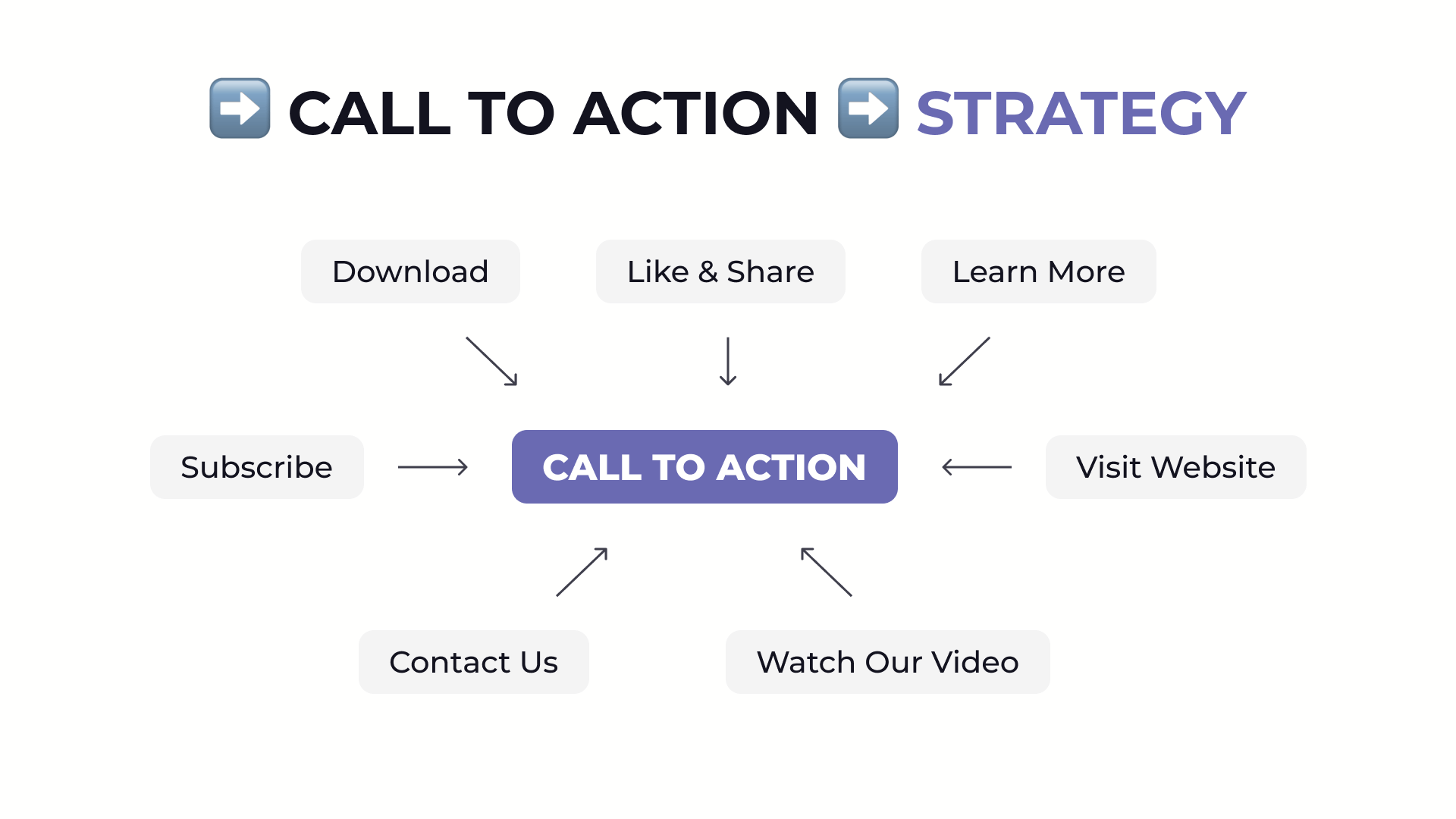
Invest In Advertising
Though inbound marketing is a great way to attract leads organically, sometimes it’s necessary to invest in targeted advertising. There are many ways to do this, but some of the most common methods include:
- Google AdWords.
- Facebook Ads.
- LinkedIn Ads.
Optimize Your Website For Conversions
You need to make it as easy as possible for them to take the next step in your sales funnel.

5) Create Landing Pages That Utilizes Your SEO Strategies
There are an array of SEO strategies that would suit your SaaS company. However, we’ve compiled a few SEO strategies to consider for your SaaS inbound marketing, specifically for the “attraction” stage of the inbound marketing funnel.
Build A Pillar Page
A pillar page is a comprehensive guide that covers all aspects of a particular topic. The content on a pillar page is meant to educate and inform the reader about the main topic while also including links to other related pages on your website.
To get started, brainstorm a list of topics relevant to your business that would interest your target audience. Once you have a list of potential topics, do some research to see if there are any pillar pages already written on these topics.
If not, this is your chance to create something unique and informative that will help you stand out from the competition.
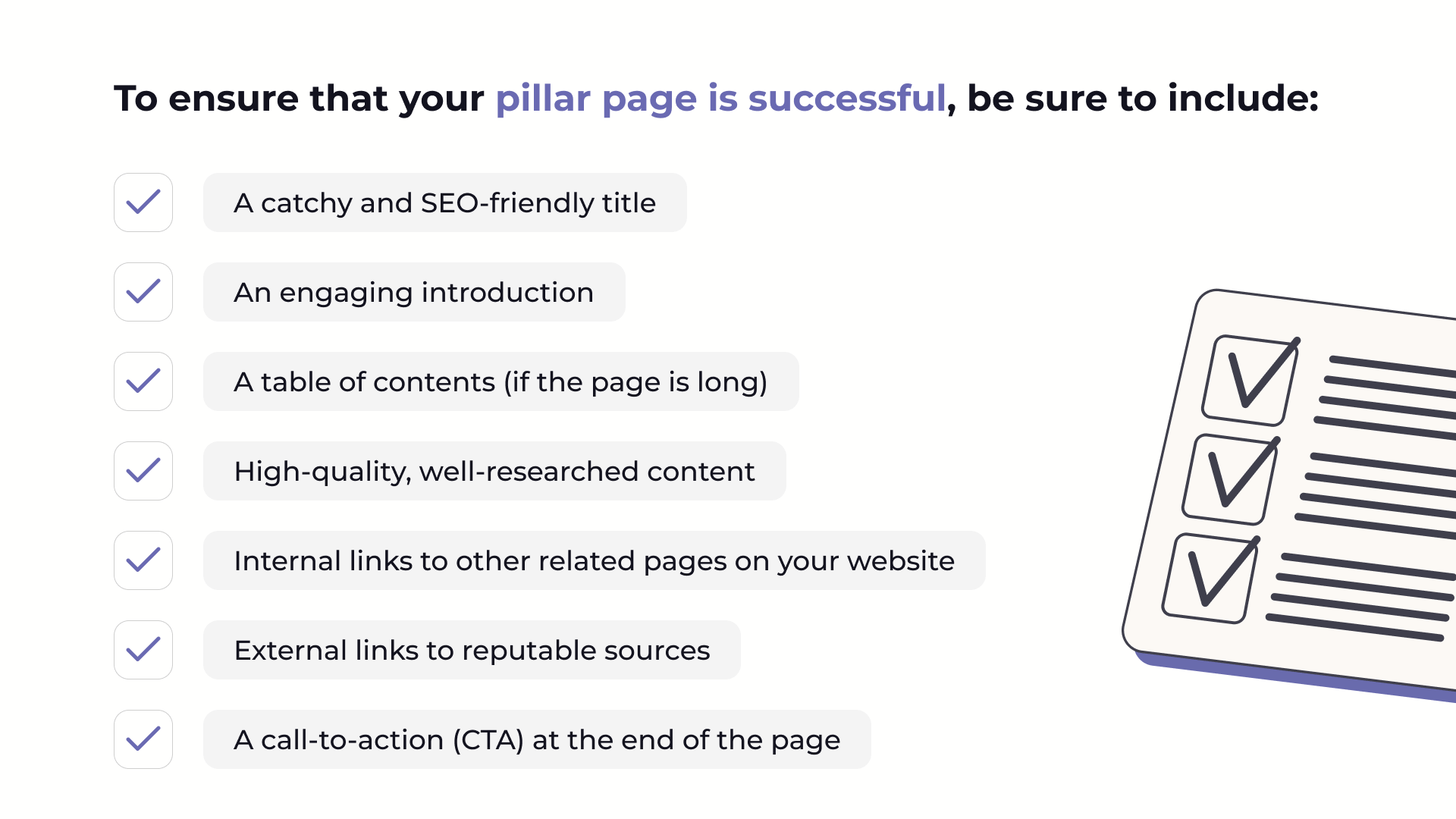
Optimize Your Website For Voice Search
Voice search is a technology that allows users to perform a search by speaking into a device instead of typing.

To optimize your website for voice search, you need to ensure that your content is well-written and easy to understand. This means using short, simple sentences and including natural language keywords throughout your content. In addition, you should focus on creating content that answers common questions related to your business or, in this case, the SaaS industry.
Submit Your Site To Directories
Directories are websites that list businesses in a specific category or industry. When you submit your website to a directory, your business will be listed alongside similar businesses. This is a great way to increase your visibility online and attract new website visitors.
To find relevant directories to your business, search for “business directory” + your industry or location. For example, if you own a SaaS company in Los Angeles, you would search for “business directory + SaaS company Los Angeles.”
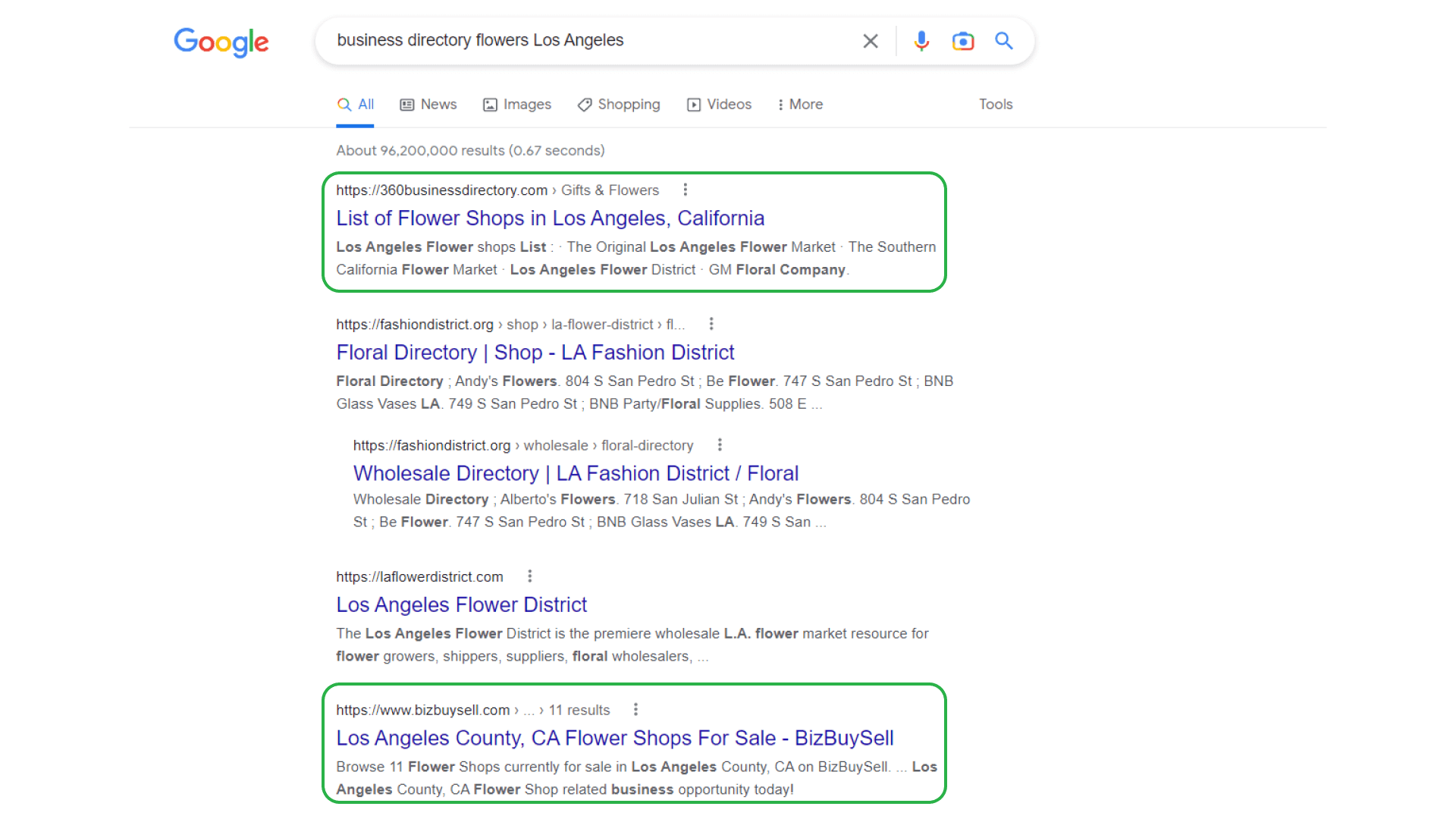
Once you find relevant directories, simply submit your website and provide the required information. For example, include your business name, address, phone number, and website URL. In some cases, you may also be required to describe your business briefly.
Add Social Media Buttons To Your Website
To add social media buttons to your website, you first need to create accounts on the social media channels that you want to use. Once you have created your accounts, you can add social media buttons to your website.

Once you have added social media buttons to your website, promote your content on your social media accounts. This will help to increase the reach of your content and, ultimately, lead to more website traffic.
Include Links To Your Website In Your Email Signature
Your email signature is the text that appears at the end of your emails. This is a great place to promote your website, as it is seen by everyone who receives an email from you.
To add a link to your website in your email signature, simply add the URL of your website after your name. For example, if your name is John Smith and your website is www.example.com, your signature would look like this:
John Smith
Utilize The Featured Snippets Feature On Google
Featured snippets are brief answers to common questions that appear at the top of the search results page (SERPs) on Google. These snippets are designed to give users quick and easy answers to their questions.
To take advantage of featured snippets, you need to ensure that your content is well-written and informative. In addition, your content should be structured in a way that makes it easy for Google to understand.
For example, if you’re writing an article about how to make a cake, you should structure your content in a step-by-step format. This will make it easier for Google to identify your content as a featured snippet.
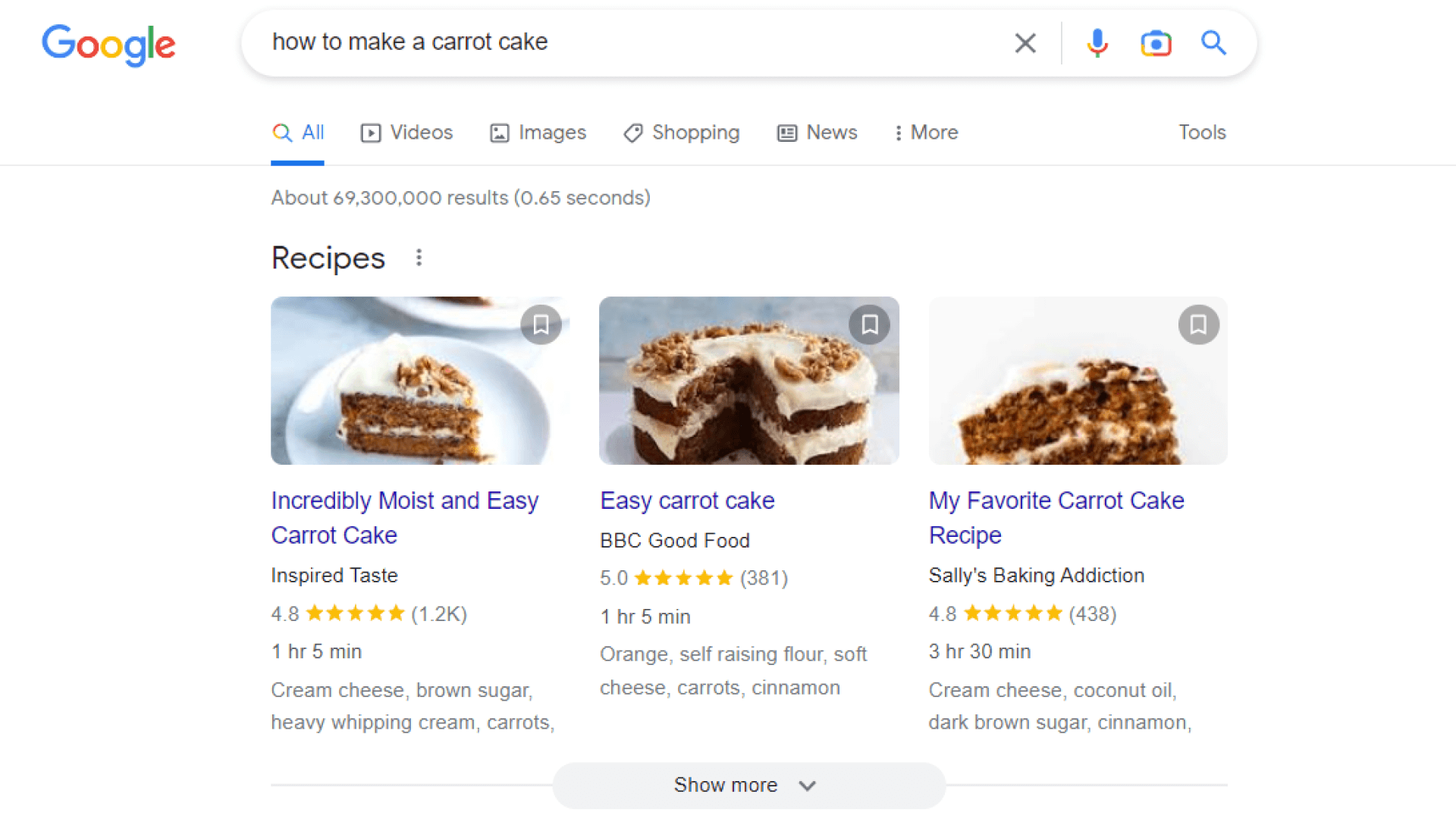
Also, research the featured snippets your competitors are ranking for and try to target the same keywords. This way, you can identify any gaps in your content and fill them so you can also rank for those keywords.
Use Long-Tail Keywords
Long-tail keywords are generally 3-5 words long and are highly specific. As a result, they usually have low search volume but have a high conversion rate.
For example, if you’re an accounting software company, a long-tail keyword could be “best accounting software companies for small businesses.”
You should focus on long-tail keywords because:
- they’re less competitive and easier to rank for.
- they’re highly specific.
- you will target a specific audience
Most search queries (70%) are made up of long-tail keywords, which also happen to convert better than short keywords by 2.5x.
You can use Google AdWords Keyword Planner or Moz Keyword Explorer to find long-tail keywords.
Don’t forget to include your long-tail keywords in your title tags, meta descriptions, and heading tags. This will help Google understand your content and index it accordingly.
6) Distribute Your Content
For your content to reach a wider audience, you need to promote it on other platforms. In addition to SEO, consider using social media, email marketing, and paid advertising to promote your content.
Once you’ve created high-quality content, it’s essential to get it in front of as many people as possible. You need to have a content promotion strategy to reach your target market effectively.
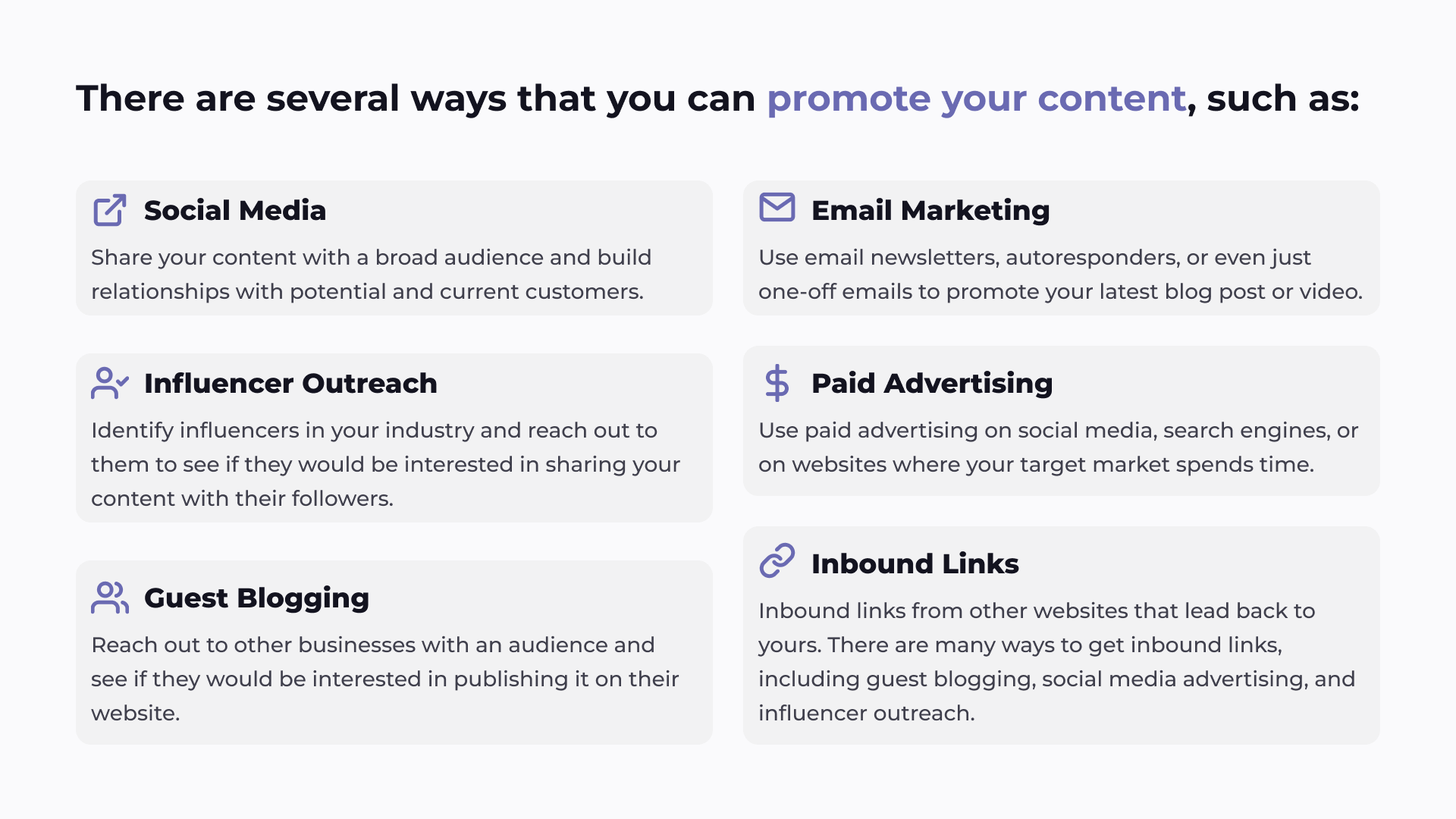
There are several ways that you can promote your content, such as:
Social Media
Share your content with a broad audience and build relationships with potential and current customers.
Email Marketing
Use email newsletters, autoresponders, or even just one-off emails to promote your latest blog post or video.
Influencer Outreach
Identify influencers in your industry and reach out to them to see if they would be interested in sharing your content with their followers.
Paid Advertising
Use paid advertising on social media, search engines, or on websites where your target market spends time.
Guest Blogging
Reach out to other businesses with an audience and see if they would be interested in publishing it on their website.
Inbound Links
Inbound links from other websites that lead back to yours. There are many ways to get inbound links, including guest blogging, social media advertising, and influencer outreach.
7) Automate your inbound marketing strategies with tools
Sustainability is the name of the game when it comes to inbound marketing. If you want to maintain a high lead conversion rate, you’ll have to create content and lead magnets that match your ideal customer profile (ICP).
With marketing automation tools such as HubSpot, Leadpages, or Marketo, you can take a lot of the manual work out of inbound marketing, making it easier to sustain your efforts over the long term. In addition, these tools can help you scale your inbound marketing strategies to reach more people with less effort.
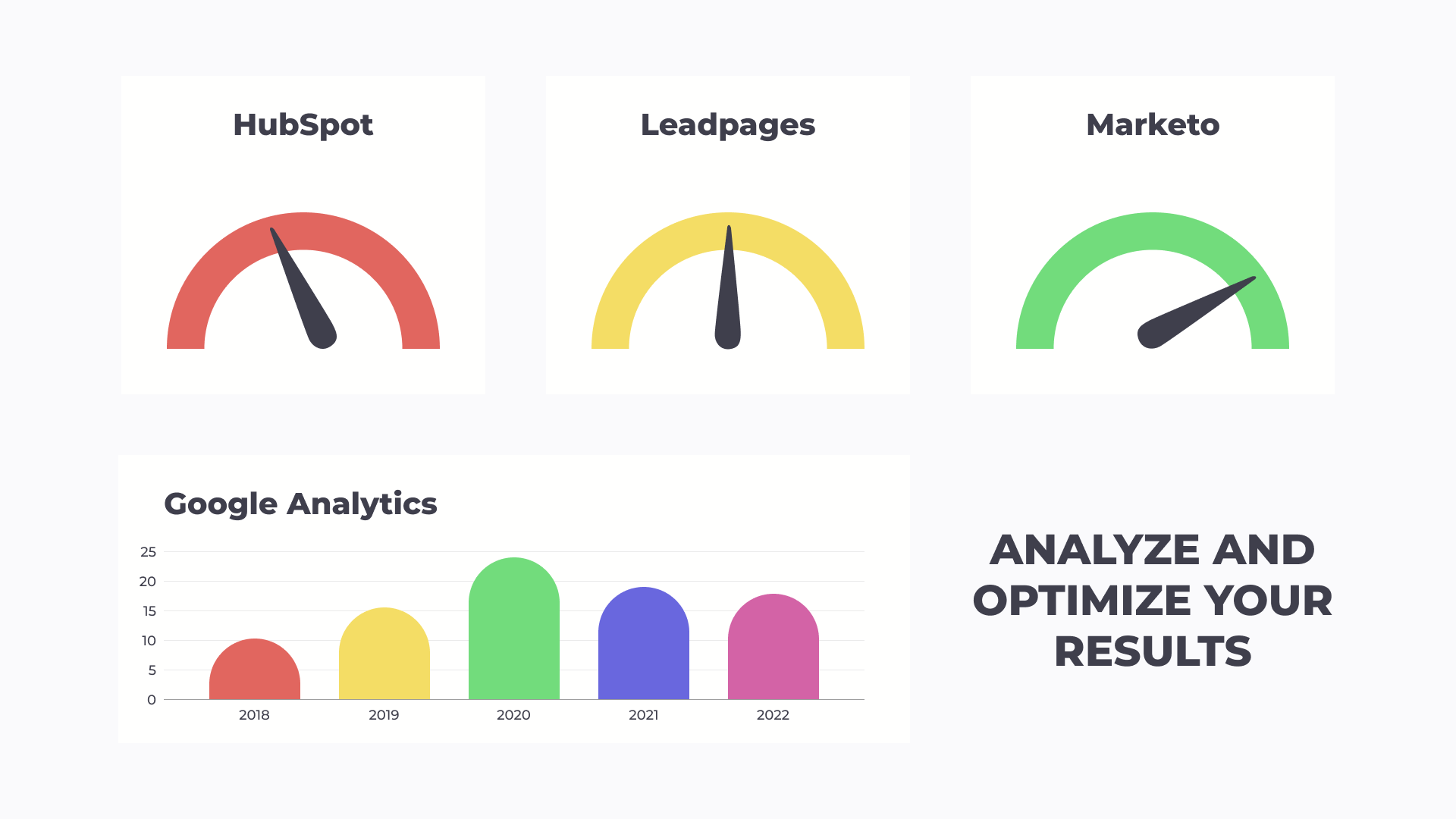
8) Analyze And Optimize Your Results
It’s crucial to analyze your results and optimize your inbound marketing strategy based on what’s working and what’s not.
Here are tools you can use:
- SEMrush: To find the BEST keywords with high traffic volume that our competitors are already paying for and ranking.
- Google Search Console: This works best to see how our pages rank in SERPS, what keywords they rank for, and if any site issues need to be fixed.
- Google Trends: To get insights into whether the keyword is getting more or fewer searches over time and in what geographical regions.
- Google Analytics: To see how users interact with our website once they’re on it. We can see what pages they’re landing on, how long they stay on the page, and what other pages they visit before leaving. Google Analytics is also great for finding keywords that bring high-quality traffic that converts.
Quantitative data is vital for understanding how well our inbound marketing efforts work and where we can improve.
Summary
By following these strategies for inbound marketing for SaaS, you can start to generate more qualified leads and customers for your SaaS company.
To be successful, you should:
- create high-quality content,
- distribute it widely,
- use lead generation tools
- analyze your results and optimize your strategy based on what’s working.
By doing this, you’ll be able to attract more leads and customers for your SasS business.
What inbound marketing tactics have you found successful for your SaaS business? Let us know in the comments below.







 View another articles
View another articles